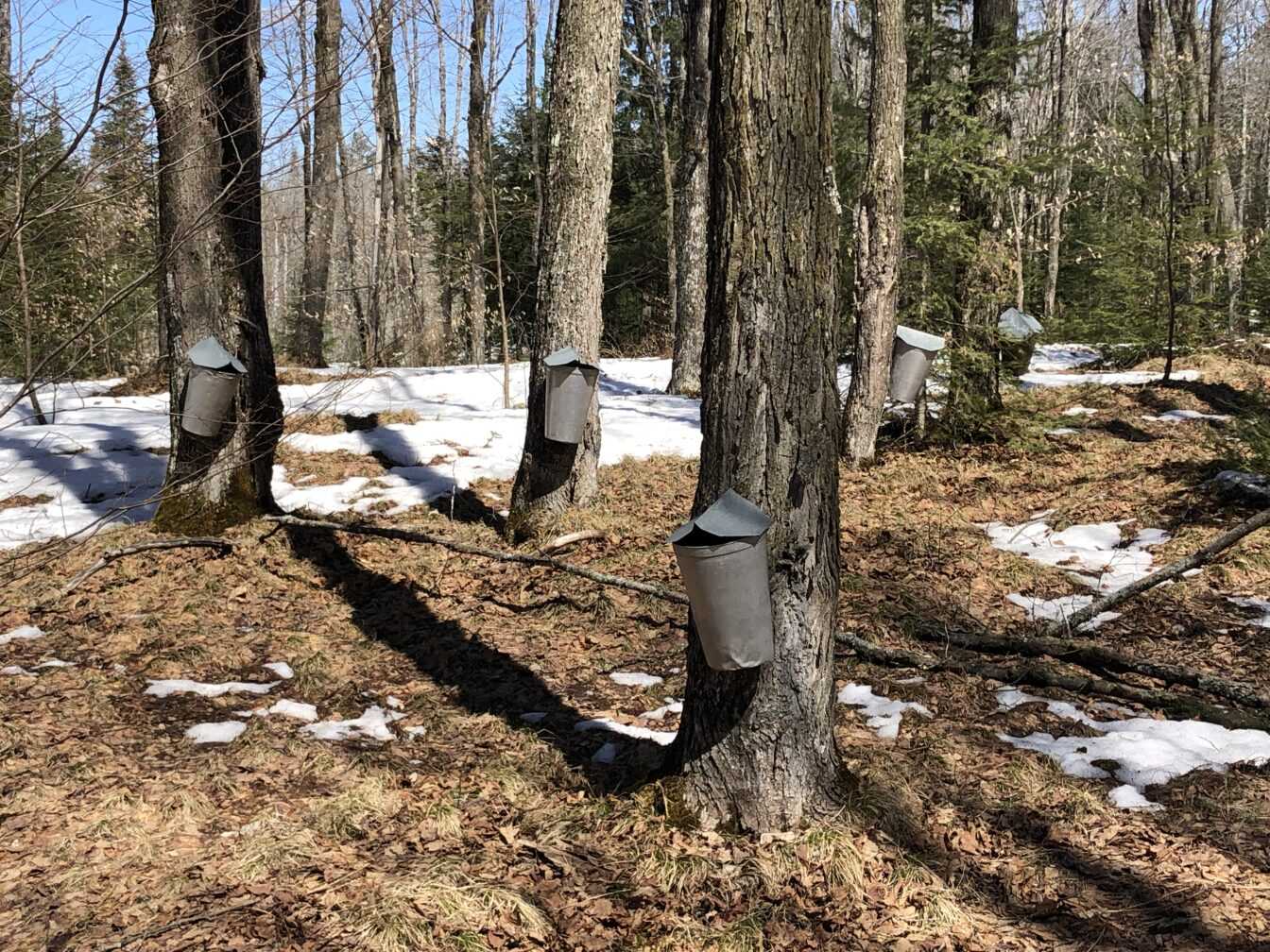Wisconsin ranked fourth behind Vermont, New York and Maine for maple syrup production during the 2023 season, according to the United States Department of Agriculture. Though Wisconsin produced 402,000 gallons of maple syrup, sugar maple trees, sugarbush plants and the tapping season are facing a changing climate.
“Climate change is real, and it is with us,” coordinator for the Northwoods Climate Change Response Framework Stephen Handler said during the August Maple Hour webinar hosted by the Wisconsin Extension Maple Syrup Program.
According to Handler, Wisconsin is facing increasing temperatures, with about a three-degree increase observed over the past 70 years. But the rate of warming in winter months — December, January and February — is faster compared to the summer months of June, July and August.
Climate adaptation specialist with the Northern Institute of Applied Climate Science Mattison Brady said what’s concerning about climate change doesn’t necessarily have to do with physical changes. Instead, what’s concerning is the rate at which climate change is happening.
Specifically, winter warming is occurring at a rate 1.5 to 2 times faster than the rate across the entire year, Handler said. For maple syrup tapping season, in particular, this means anticipating beginning tapping season earlier than in prior years, Maple Syrup Program Project Assistant Scott Hershberger said.
Handler said though forests are “resilient” and can handle a lot of change, it’s when the change occurs together — or becomes a “threat multiplier” — that threatens the ecosystem.
Heavy precipitation events are also becoming more frequent, Handler said, which raises the risk of drought stress. Forests are more at risk for drought stress when facing heavy rainfall because the soil doesn’t retain the moisture — the rain will just run off.
To adapt to these climate changes, Hershberger created an “adaptation menu” with strategies to help address concerns maple syrup producers may have.
But it’s not just climate change-related impacts that Herberger’s adaptation menu and the Maple Syrup program seek to address. For example, the menu includes actions if a tapper observes lower sap sugar content, changes to soil composition or more invasive species.
The adaptation menu and Maple Syrup Program were made possible by a three-year Acer grant from the USDA, given to maple syrup-related projects across the country, Hershberger said. This was the first time Wisconsin had received one.
The grant gave the Maple Syrup Program enough momentum and has resulted in enough success so far that those involved intend to submit another grant. This will allow the program to continue after the initial three years, Hershberger said.
Though the adaptation menu aims to provide solutions for changes in sugarbush and sugar maple habitats, producers may tap alternative trees for sap like red maples, which have similar sugar content to sugar maple sap, according to Brady.
Hershberger said, historically, red maples were overlooked as sap sources because their sugar content isn’t as high as sugar maples, and the wood is also softer. But, with the changing climate, red maples will thrive, which may encourage maple syrup producers to tap them too.
“Red maple, more than sugar maple is a bit more of a generalist as it can do a little bit better on drier and wetter sites, which means that it might in some cases do better in more future variable climates,” Brady said.
This doesn’t mean tappers should focus all their attention on red maples though. Rather, if maple syrup producers have red maples generating sufficient sap for their purposes, it could be a good alternative, Brady said.
Still, there’s a lot to learn about respectful land cultivation and proper land management. One method that is still undergoing active research is assisted migration.
Since the ideal climate of sugar maples is moving northward faster than the trees can spread themselves, assisted migration would help with intentional planting further north, Hershberger said.
Paying attention to microclimates on landscapes may also support maple trees’ success in a changing climate. Microclimates look at the direction a location faces relative to the sun, Brady said.
Typically, north-facing areas tend to be cooler and wetter because they don’t receive as much direct sunlight in the northern hemisphere, Brady said. Areas in depressions or valleys allow cooler air to collect, causing less moisture stress on the trees there.
Brady said identifying microclimates in a landscape would be potentially better for sugar maple in a warmer, drier climate.
Another way to do this is through learning from and incorporating Indigenous practices and wisdom. Western and European-informed societies are not learning as much or as fast as they should be from Indigenous people, Hershberger said.
An example to learn from is the Menominee Tribe’s treatment of the Menominee Forest. The tribe has been sustainably logging the forest for over a century, Hershberger said. Now, they are seeing more board feet, which is a measurement for the amount of useful wood from logging.
Hershberger said from this example, tappers, loggers and maple syrup producers can gain more by both listening to nature and working with it, rather than against it.
“It’s really helpful to try and think about ourselves not as separate from or controllers of nature but living in these systems and needing to think about how we can sustainably coexist with them and not just extract what we need from them,” Brady said.


